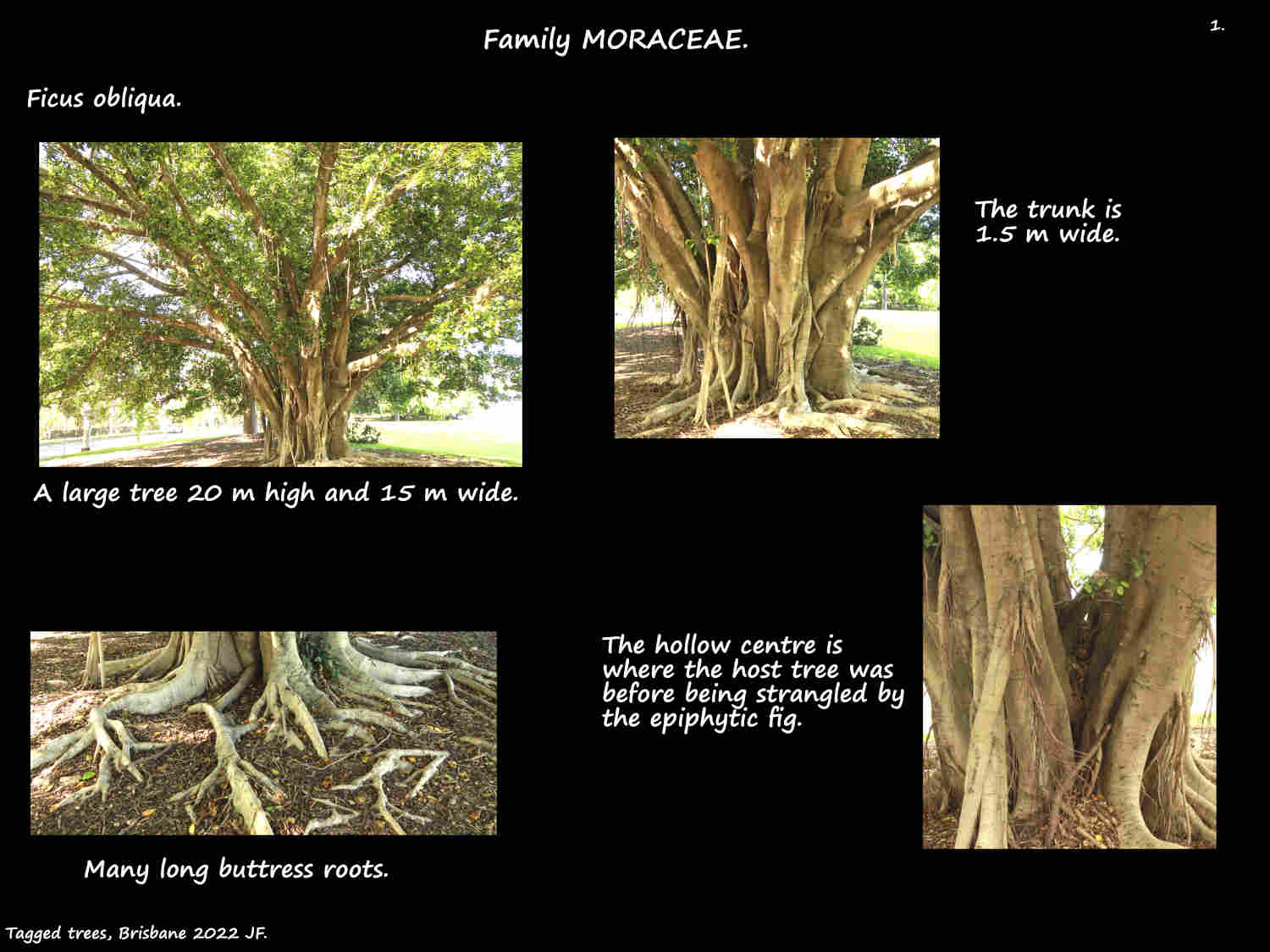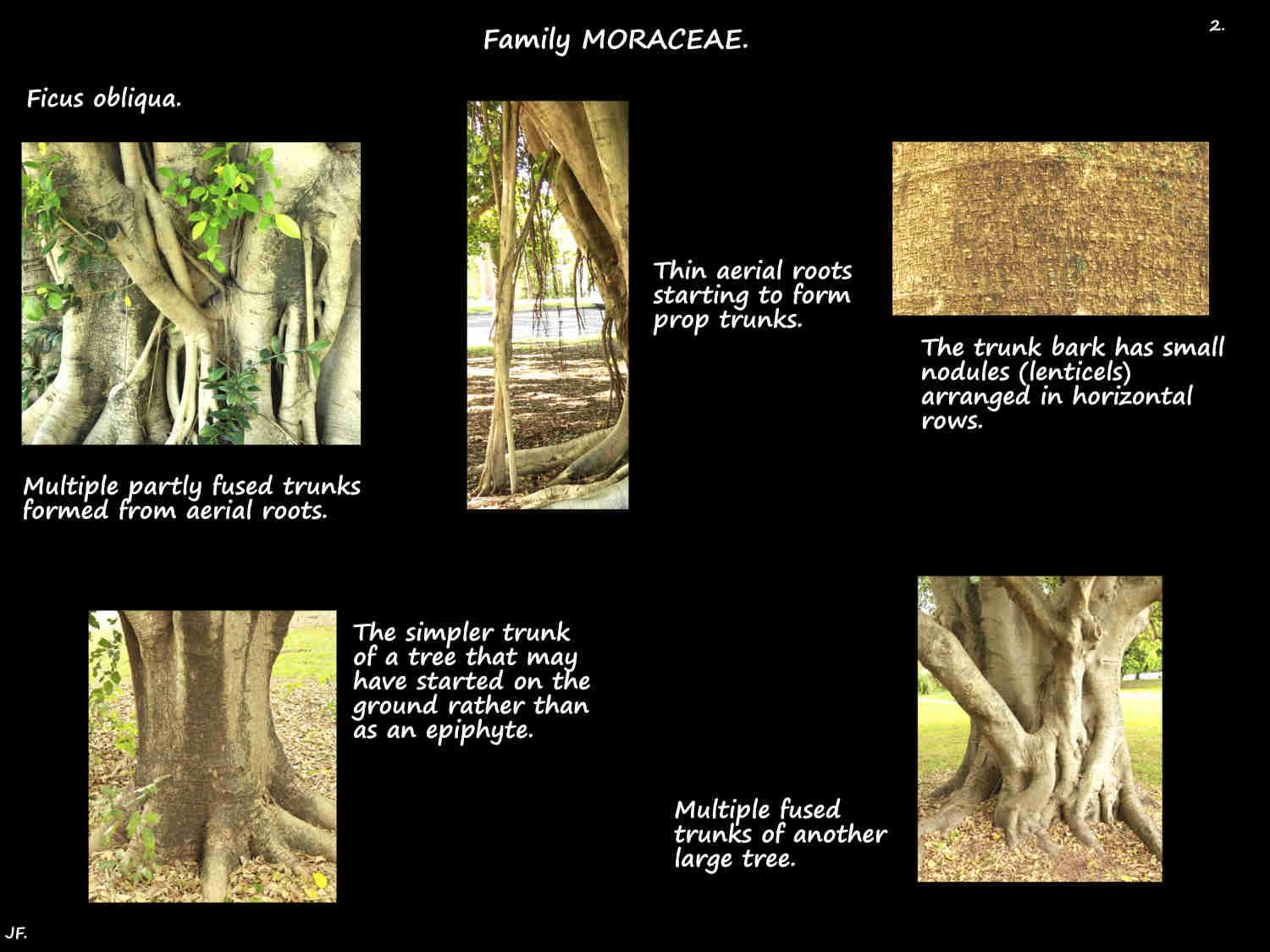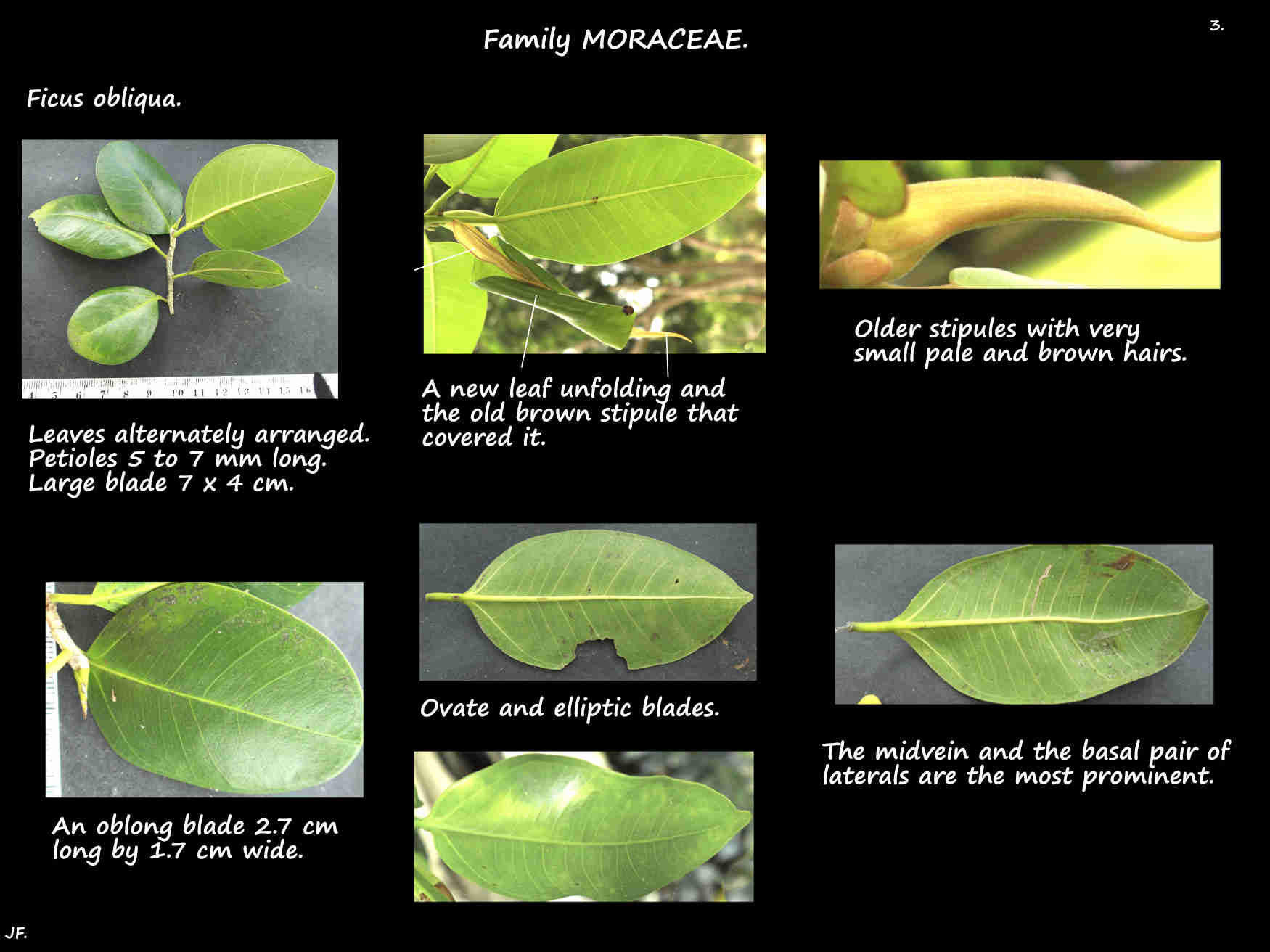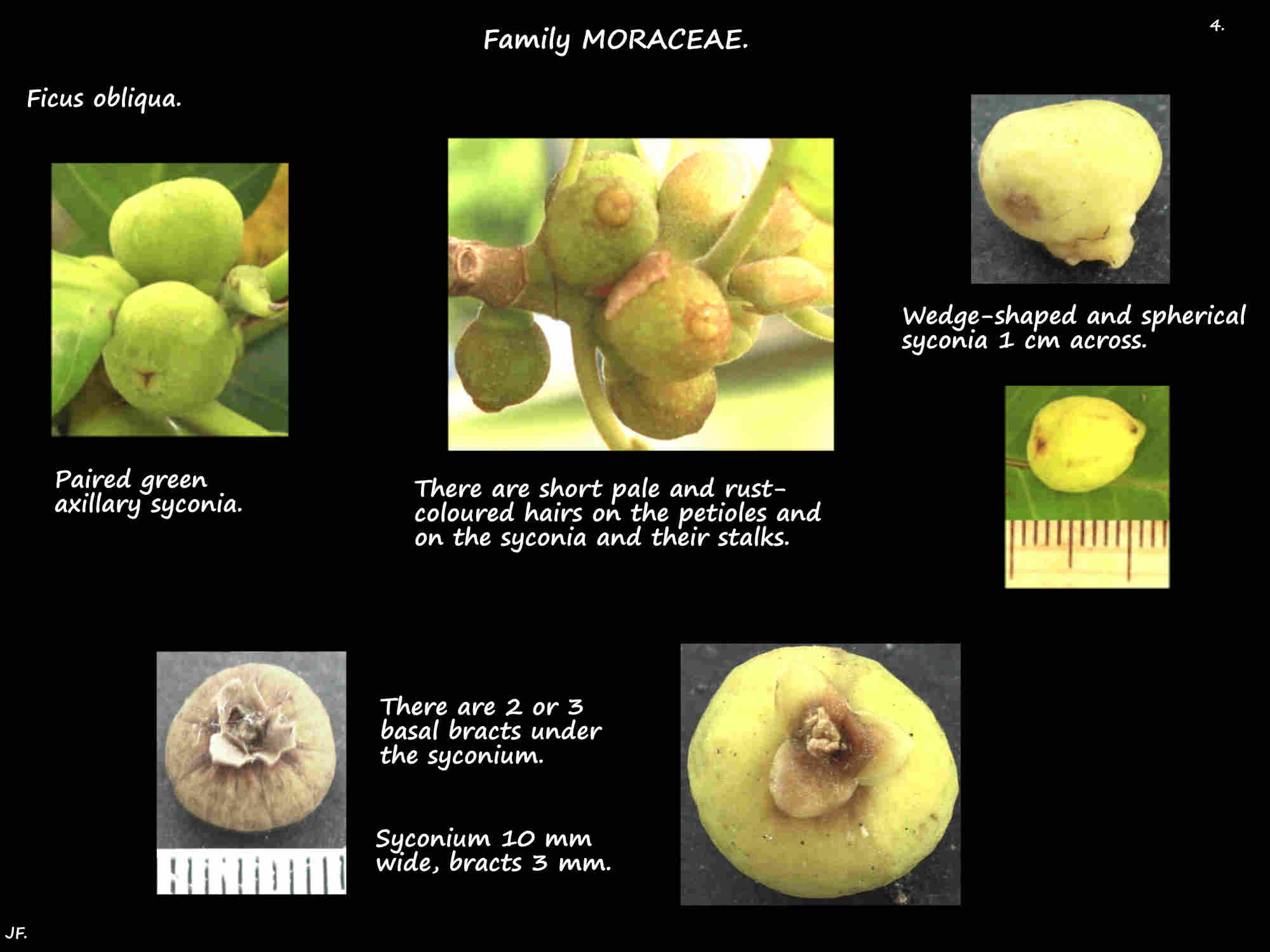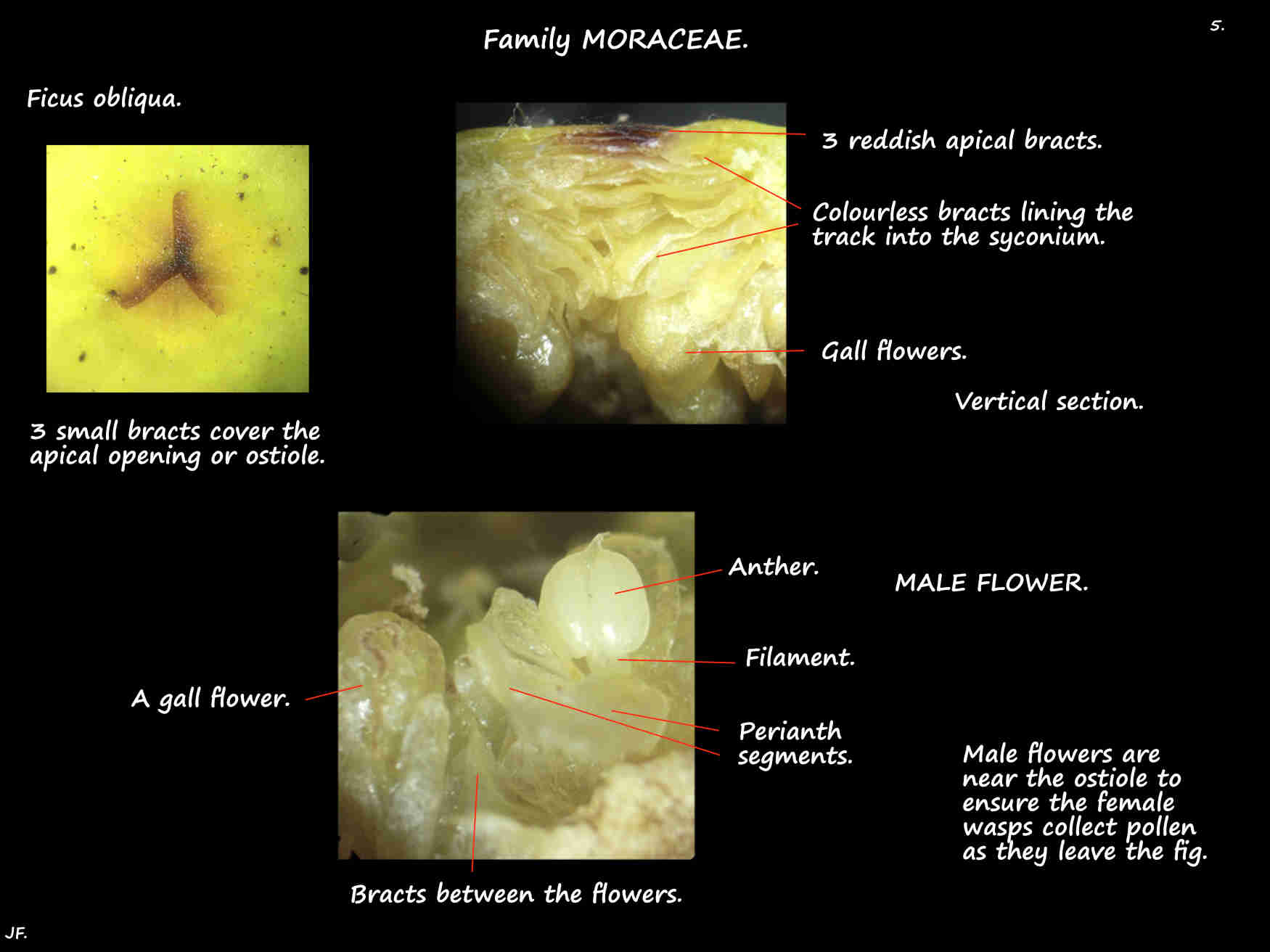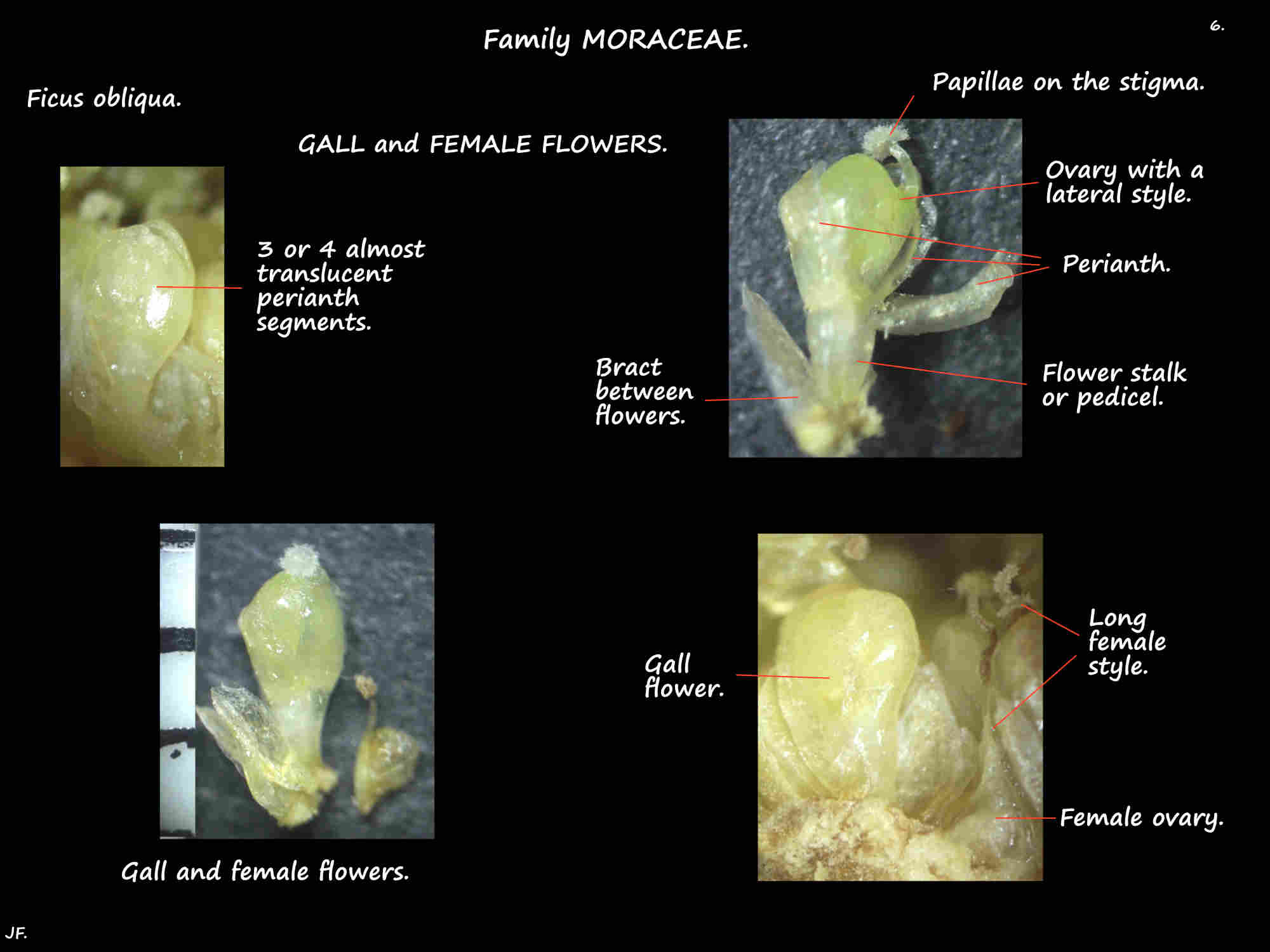Ficus obliqua.
The small leaved fig is native to eastern Australia, New Guinea and the S.W. Pacific.
These strangling figs can live for hundreds of years and are seen in parks and other large spaces in Brisbane.
The trees typically begin as an epiphyte on other trees but seeds may also germinate on the ground or on rocks.
Beginning as an epiphyte they send multiple aerial roots down the sides of the host that root and thicken into trunks.
Eventually strangling the host tree the trunks fuse to form a massive trunk up to 2 or 3 m wide.
The trees can be 50 or 60 m high with a canopy almost as wide but are more often seen half that size.
They are supported by wide spreading buttress roots.
The bark is a pale grey or brownish with small nodules (lenticels) and ridges.
Young stems may have pale and/or rust coloured hairs but older ones have none.
Damaged parts exude a large amount of white latex.
The alternately arranged leaves are on a petiole 1 to 2 cm long with a groove on the upper surface.
Stipules protecting the leaf buds are 3 to 4 cm long.
Petioles and stipules usually have no hairs but there may be some pale and/or rust coloured ones.
The glossy leaves are small for a strangler fig leading to its common name.
They are mostly 5 to 8 cm long by 2 to 5 cm wide although some may be larger.
The blade can be ovate, elliptic, oblong or oblique, the base is blunt or wedge-shaped and the edge smooth.
The yellowish midvein and lateral veins are raised on the lower surface.
There are 12 or more pairs of lateral veins with the basal pair the most prominent.
The ends of the laterals loop together just inside the blade margin.
There are no hairs on the leaf blades.
Inflorescences are paired axillary syconia formed from the swollen and inverted receptacle (top of the stalk).
Up to 10 or 12 mm wide and on a stalk or peduncle a few mms long they are the smallest of the strangler figs.
They can be spherical, a slightly flattened sphere or wedge-shaped.
At the top of the peduncle are 2 or 3 overlapping bracts that fall off.
The peduncle, basal bracts and the syconium may be smooth or have small pale and/or rust-coloured hairs.
The slightly raised apical opening or ostiole is surrounded by 3 small bracts.
The track from the ostiole through the fleshy syconium wall is lined by bracts.
The inner surface of the receptacle is covered by the small flowers separated by bracts.
Each syconium has male, female and gall flowers.
All flowers have 3 or 4 delicate almost transparent perianth segments.
Male flowers are mostly found around the ostiole.
On a short stalk or pedicel they have 1 stamen with kidney-shaped anthers.
Fertile female flowers, with or without a short pedicel have an ovary with a single style and a cylindrical
and often curved stigma with papillae.
The larger and taller sterile female or gall flowers, also with or without a pedicel are where the pollinating
wasp lays her eggs.
The mature fruit are figs that ripen from green to yellow or orange with small dark red spots.
There may be fruit on the tree all year.
Some varieties are described with slightly different leaf shapes, larger fruit, longer pedicels and petioles.
J.F.
